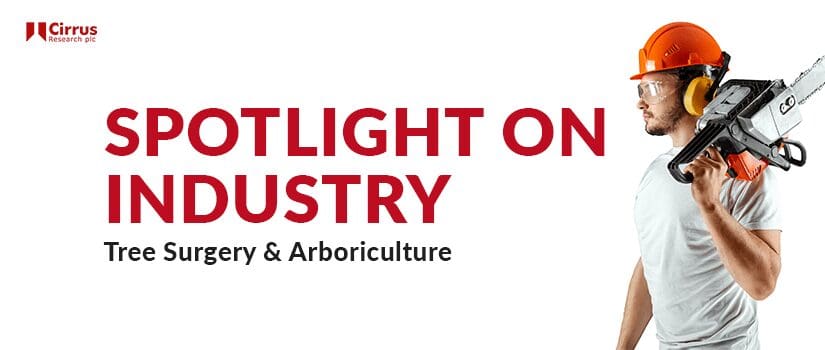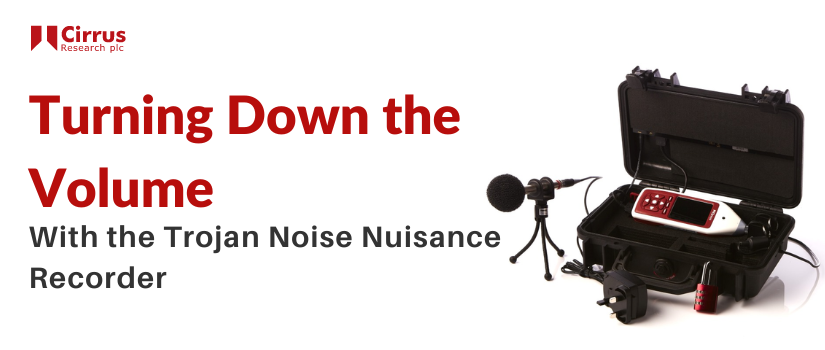In a previous article, we explored the impact of excessive noise exposure on tree surgeons and arborists as part of our ‘Spotlight on Industry’ series. This week, we’re discussing the risks of vibration and the impact it can have on those working in tree surgery and arboriculture. It’s safe to say that noise and vibration go hand-in-hand, after all, noise is caused by vibrations. Although the risks are different, they’re no less dangerous or damaging to someone’s quality of life. As with noise, workplace vibration is covered by a set of rules called the Control of Vibration at Work Regulations, which were introduced in the same year as those that govern occupational noise. These regulations set the limits of people’s exposure and are in place to help protect employees from the dangers of exposure to excessive vibration levels.
Vibration and Tree Surgery
As highlighted when we discussed noise, vibration probably isn’t one of the most pressing dangers people would consider when thinking about tree surgery. But just as we showed that noise can be incredibly damaging to a person’s health and well-being, so too can the same be said of vibration, and once again it’s the tool that is so vital to a tree surgeon’s work that’s the culprit.
Before we look at the specific impact of vibration in arboriculture from a tree surgeon’s tools, let us look at how vibration is measured.
How is vibration measured?
Vibration is measured in meters per second squared (m/s2) using a vibration meter. A small triaxial accelerometer is placed on the tool that needs to be measured close to where it is held, which connects to the vibration meter. The vibrations from the tool cause a small plate within the accelerometer to move up and down, which is then translated into an electrical signal and read by the vibration meter.
As with noise, the higher the vibration level and the longer the exposure to it, the more dangerous it becomes. However, where noise and vibration differ is that there is a point at which vibrations are so fast, that they go almost undetected by the body, meaning the risk is as minimal as with something that vibrates incredibly slowly. Therefore, so-called vibration reduction clothing must be worn cautiously, as it could inadvertently lower the vibration level to a point where it could become dangerous.
It’s difficult to give an average vibration level for any tool as there are so many factors that can affect how much vibration the user experiences. In the case of chainsaws and tree surgeons, it depends on the type of chainsaw, where it’s held and what it’s cutting through. So, instead, let us focus on the action and limit values as set out in the Control of Vibration at Work Regulations 2005.
The exposure action value is 2.5 m/s2 A(8), at which point employers are obligated to introduce measures to reduce the amount of vibration workers are exposed to. Breaking down this number means 2.5 m/s2,averaged over 8 hours. The limit value is 5.0 m/s2 A(8), which must not be exceeded.
A study conducted by the Health & Safety Executive into chainsaw vibration highlights the fact that levels regularly exceed the action value and in some cases, breach the limit value:
| Activity | Saw | Rear hand | Front hand | Highest hand* |
| First thin | Saw A | 4.1 | 3.8 | 4.1 |
| First thin | Saw B | 3.8 | 4.2 | 4.2 |
| First thin | Saw C | 5.4 | 4.7 | 5.4 |
| First thin | Saw D | 4.1 | 4.4 | 4.4 |
| Subs. thin | Saw A | 3.7 | 3.5 | 3.7 |
| Subs. thin | Saw B | 3.5 | 3.8 | 3.8 |
| Subs. thin | Saw C | 5.0 | 4.4 | 5.0 |
| Subs. thin | Saw D | 3.8 | 4.1 | 4.1 |
| Clear fell (SS) | Saw A | 4.0 | 3.8 | 4.0 |
| Clear fell (SS) | Saw B | 3.7 | 4.2 | 4.2 |
| Clear fell (SS) | Saw C | 5.4 | 4.8 | 5.4 |
| Clear fell (SS) | Saw D | 4.1 | 4.4 | 4.4 |
| Clear fell (pine) | Saw A | 3.9 | 3.8 | 3.9 |
| Clear fell (pine) | Saw B | 3.5 | 4.2 | 4.2 |
| Clear fell (pine) | Saw C | 5.2 | 4.7 | 5.2 |
| Clear fell (pine) | Saw D | 4.0 | 4.3 | 4.3 |
| Brashing | Saw A | 4.6 | 4.2 | 4.6 |
| Brashing | Saw B | 4.6 | 4.7 | 4.7 |
| Brashing | Saw C | 6.1 | 5.1 | 6.1 |
| Brashing | Saw D | 4.6 | 4.9 | 4.9 |
| Cross cutting | Saw A | 1.6 | 1.8 | 1.8 |
| Cross cutting | Saw B | 1.3 | 2.0 | 2.0 |
| Cross cutting | Saw C | 2.2 | 2.3 | 2.3 |
| Cross cutting | Saw D | 1.7 | 1.9 | 1.9 |
| Forest cleaning | Saw A | 4.1 | 3.6 | 4.1 |
| Forest cleaning | Saw B | 3.2 | 3.5 | 3.5 |
| Forest cleaning | Saw C | 4.8 | 4.3 | 4.8 |
| Forest cleaning | Saw D | 4.4 | 4.2 | 4.4 |
| Arboriculture | Saw A | 1.8 | 1.6 | 1.8 |
| Arboriculture | Saw B | 1.5 | 1.7 | 1.7 |
| Arboriculture | Saw C | 2.5 | 2.1 | 2.5 |
| Arboriculture | Saw D | 1.9 | 1.9 | 1.9 |
| Arboriculture | Saw E | 1.2 | 1.2 | 1.2 |
Source: https://www.hse.gov.uk/research/hsl_pdf/2004/hsl0413.pdf
* Daily exposure above 5m/s²A(8) are shown in bold, daily exposures below 2.5m/s² are shown in italics
Activity
Saw
Rear hand
Front hand
Highest hand*
First thin
Saw A
4.1
3.8
4.1
First thin
Saw A
4.1
3.8
4.1
By effectively measuring and monitoring vibration levels, the risks posed to tree surgeons can be limited and reduced. But what dangers do excessive vibration levels pose to arborists?
The risks of vibration to tree surgeons and arborists
As with noise, vibration poses significant risks to the health and well-being of tree surgeons. The most recent data from the HSE shows that as of 2019, there were 205 new cases of hand-arm vibration syndrome (HAVS) and 135 new cases of carpal tunnel syndrome. However, these are only two of the health conditions associated with exposure to excessive vibration levels.
Nerve damage in the fingertips is another serious effect of excessive vibration exposure, which can lead to further complications such as Raynaud’s Syndrome and in extreme cases, the loss of fingers.
What can tree surgeons and arborists do to help minimise the risks presented by excessive vibration?
The risks of excessive vibration exposure are present every day in the working life of a tree surgeon. But that doesn’t mean that its effects are inevitable. In our next article, we’ll look at what tree surgeons and arborists can use to measure, monitor and control excessive vibration levels, helping to protect their health and overall well-being.



